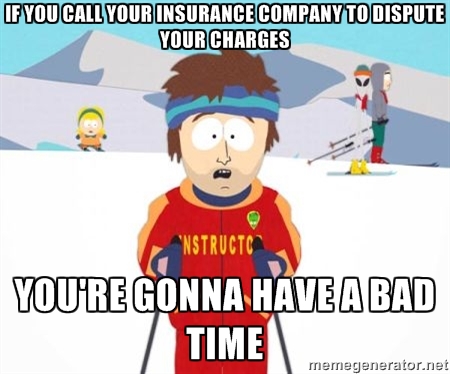If you’re a patient dealing with insurance, Stephen C. Schimpff has something to tell you. You aren’t really your physician’s customer. That’s because the insurer will decide whether and how much to pay the physician after they’ve seen you. You’re largely a bystander in the relationship, he says. The doctor’s customer is actually the insurer.
READ THE COMPLETE ARTICLE ON KEVIN MD
We believe in healthcare that is customer-focused, and that’s why we created Atlas MD. Doctors have the patient’s best interests in mind. Why else would they spend well over a decade learning their skill? However, their work isn’t customer-focused like most other professional-client relationships.
In fee-for-service medicine, you wait weeks and even months for an appointment (the national average is 20.5 days), spend hours in the waiting room and then get 10-12 minutes with your doctor. Let’s imagine if this were grocery shopping — that would be like booking an advanced appointment to go to a crowded market, and then being given fifteen minutes to do a week’s worth of shopping. Stressful, right? And probably not very effective. You’re not going to pick the ripest fruit. You’re not going to check to see if any eggs are cracked. That milk you grabbed might be spoiling before the end of the week.
Fee-for-service doctors send you to a specialist but don’t always personally call that specialist to explain what’s going on. Imagine if this were shoe shopping — you see a sales person, they help get you in the perfect pair of shoes, and then they tell you that the shoelaces need to be bought at a factory on the other side of town. You ask which one and they say, Well, any factory that makes shoelaces. Of course, the sales rep charges you full-price for the shoes, and might not even call ahead to schedule the pickup of your shoelaces.
This type of lousy primary care happens because doctors have to see 24-25 patients per day just to meet overhead and earn a personal income of ~$170,000.
As for the insurers, you’re not their customer either. Their customers are the people paying them — your employer or your government. And it shows — you wait forever on the phone, the paperwork’s like reading hieroglyphics, and you’re frustrated when you thought the insurance you had covered your latest tests, x-rays or specialist visit, only to find out that it didn’t
So you’re not the insurer’s customer and you’re not the doctor’s customer. Then whose customer are you? You’re more of a bystander. This isn’t the type of relationship you have with your lawyer, architect or accountant. You pay these people directly. Do you want more time? Easy, you pay for it. Want telephone consultation? Easy, you pay for it. But generally not in fee-for-service medicine. Of course, there are apps that want to address this issue of doctor phone consultation — Ringadoc is one example — but look how complex that is. The app is built to coordinate billing between patients’ insurance and the doctor. Compare that with Uber or Lyft. With these taxi apps, the customer pays the company directly. There’s not some app that bills a passenger’s auto insurance so that the insurance can pay the cab company. That would be absurd. So why do we do that with primary care?
And given the state of doctor psyche’s, what are we going to do about it?
Let’s look at these grim physician statistics:
– 90% say the medical system is on the wrong track.
– 83% are thinking about quitting.
– 85% think the patient-physician relationship is deteriorating.
– 72% do not think the individual mandate will lead to improved care.
– 70% think that the single best fix would be reducing government intrusion.
– 49% will no longer accept Medicaid patients.
– 74% plan to stop accepting new Medicare patients.
– 80% believe doctors and other medical professionals are the most likely to help solve the mess.
Stephen writes, “A new vision for our system must make it a health care not just a medical care system. It must recognize the importance of intensive preventive care to maintain wellness. It must address the needs of those with chronic illnesses to both improve the quality of care while dramatically reducing the costs of care. And it must be redesigned so that the patient is the customer that he or she should be. And, critically, to make it work effectively, America needs many more primary care physicians — they are and should be the backbone of the health care system…”
Is there any model besides our vision of direct care that meets ALL of these objectives? Our market needs to find a balance — a contractual obligation maintained between PATIENT and DOCTOR… the right amount of money that makes doctors happy to provide their service, so happy that they brag to colleagues about how cool their job is. When people brag about their job being cool, supply of said job goes up because students desire that very satisfaction. That means more doctors. That means more doctors offering quality care that reduces costs. By cost reduction we mean the market finding the right balance between service rendered and satisfaction received. Ideally this service isn’t always doing something — running a test, or handing out prescriptions — this service could be having a doctor in your life, 24 hours a day, who can assure you, you’re doing the right things at the right time to maintain your health.
